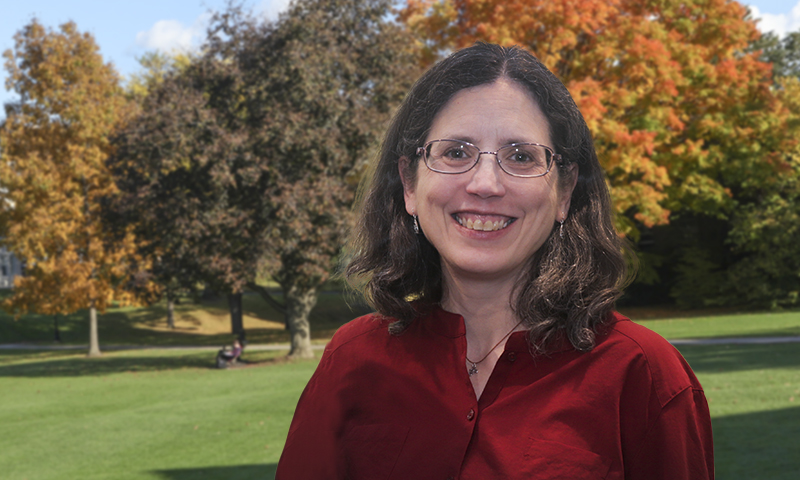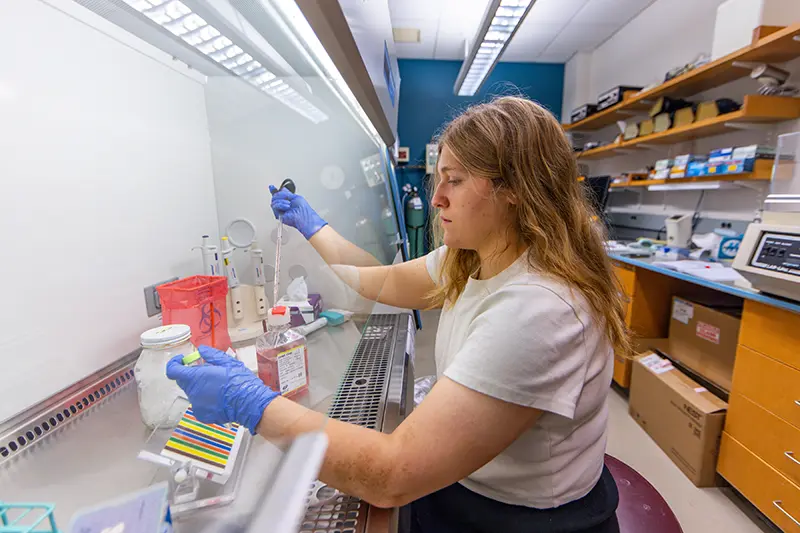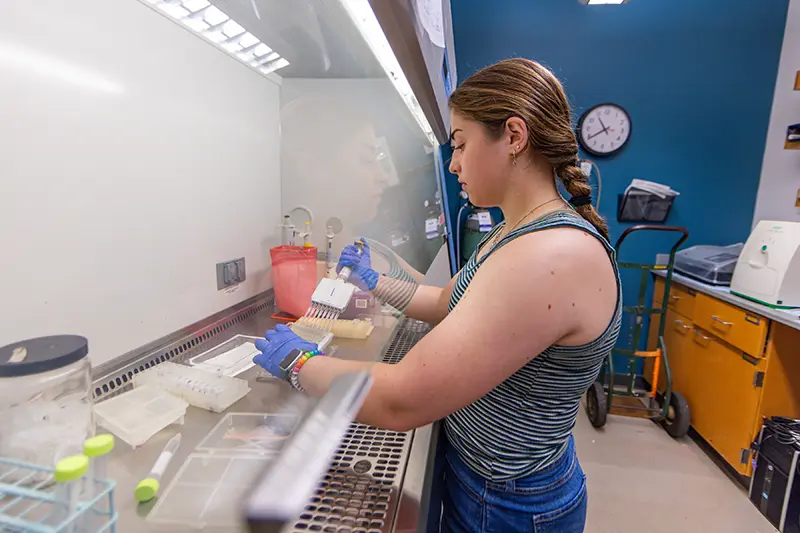
Patricia Mowery

Patricia A MoweryProfessor of Biology
Joined faculty in 2007
Ph.D., Biochemistry, University of Wisconsin-Madison (2003)
B.S., Biochemistry, Indiana University (1997)
M.A., Sociology, Yale University (1991)
B.A., Sociology, University of Chicago (1989)
Contact Information
Scholarly Interest
- Anti-cancer agents
- Cancer cell toxicity studies
- Structure-function studies
- Protein interactions
Research
My current major area of research involves developing anti-cancer agents in collaboration with HWS organic chemist, Prof. Erin Pelkey, and Christopher Newport molecular modeler, Prof. Kathryn Cole. The biological and modeling results allow us to determine what structural requirements are important for making an effective compound, and we use this information to refine the molecules for increased potency. We have identified numerous promising compounds, and we have discovered that they inhibit tubulin polymerization. Tubulin is a protein critical for cell shape, migration, proliferation, and signaling, and therefore preventing its function blocks growth of cancer cells.
Courses Taught
- Nutrition (Biol 160)
- Introduction to Biology: HIV and related topics (Biol 167)
- Introduction to Biology: What does it mean to be human? (Biol 167)
- Microbiology (Biol 222)
- Immunology (Biol 302)
- Biology Senior Seminar: Viruses (Biol 460)
- Biochemistry Senior Seminar: Viruses (Bche 460)
Publications
*Hurysz B, *Evans BA, *Laryea RN, *Boyer BE, *Coburn TE, *Dexter MS, *Edwards MA, *Faulkner GV, *Huss RL, *Lafferty MM, *Manning M, *McNulty M, *Melvin SJ, *Mitrow CM, *Patel RR, *Pierce K, *Russo J, *Seminer AM, *Sockett KA, *Webster NR, Cole KE, Mowery P, Pelkey ET. 2023. Synthesis, Modeling, and Biological Evaluation of Anti-Tubulin Indole-Substituted Furanones. Bioorg. Med. Chem. Lett. 90: 129347.
Mowery P, *Filkorn MM, *Hurysz B, *Kwansare DO, *Lafferty MM, *McFadden MA, *Neerukonda ND, *Patel RR, *Pierce K, *Sockett KA, *Truax NJ, *Webster NR, Pelkey ET. 2021. Discovery of an Indole-Substituted Furanone with Tubulin Polymerization Inhibition Activity.
Bioorg. Med. Chem. Lett
. 41: 127991.Hao L, Johnson K, Cursino L, Mowery P, Burr TJ. 2017. Characterization of the Xylella fastidiosa PD1311 gene mutant and its suppression of Pierce’s disease on grapevines. Mol. Plant Path. 18: 684-694.Hao L, Athinuwat D, Johnson K, Cursino L, Burr TJ, Mowery P. 2017. Xylella fastidiosa pil-chp operon is involved in regulating key structural genes of both type I and IV pili. Vitis. 56: 55-62.
Mowery P, *Banales Mejia F, *Franceschi CL, *Kean MH, *Kwansare DO, *Lafferty MM, *Neerukonda ND, *Rolph CE, *Truax NJ, Pelkey ET. 2017. Synthesis and evaluation of the anti-proliferative activity of diaryl-3-pyrrolin-2-ones and fused analogs. Bioorg. Med. Chem. Lett. 27: 191-195.
Hao L, Zaini PA, Hoch HC, Burr TJ, Mowery P. 2016. Grape cultivar and sap culture conditions affect the development of Xylella fastidiosa phenotypes associated with Pierce's disease. PlosOne. 11(8): e0160978.
Mowery P, Ames P, Reiser RH, Parkinson JS. 2015. Chemotactic signaling by single-chain chemoreceptors. PlosOne. 10(12): e0145267.
Johnson KL, Cursino L, Athinuwat D, Burr TJ, Mowery P. 2015. Potential complications when developing gene deletion clones in Xylella fastidiosa. BMC Res. Notes. 8: 155.
Cursino L, Athinuwat D, *Patel K, Galvani CD, Zaini PA, Li Y, De La Fuente L, Hoch HC, Burr TJ, Mowery P. 2015. Characterization of the Xylella fastidiosa PD1671 gene encoding degenerate c-di-GMP GGDEF/EAL domains, and its role in the development of Pierce's disease. Plos One. 10: e0121851.
Cursino L, Galvani CD, Athinuwat D, Zaini PA, Li Y, De La Fuente L, Hoch HC, Burr TJ, Mowery P. 2011. Identification of an operon, Pil-Chp, that controls twitching motility and virulence in Xylella fastidiosa. Mol. Plant Microbe Interact. 24: 1198-1206.
Mowery P, *Ostler JB, Parkinson JS. 2008. Different signaling roles of two conserved residues in the cytoplasmic hairpin tip of Tsr, the Escherichia coli serine chemoreceptor. J. Bacteriol. 190: 8065-8074.
Carlson CB, Mowery P, Owen RM, Dykhuizen EC, Kiessling LL. 2007. Selective tumor cell targeting using low-affinity multivalent interactions. ACS Chemical Biology 2: A-I.
Owen RM, Carlson CB, Xu J, Mowery P, Fasella E, Kiessling LL. 2007. Bifunctional ligands that target cells displaying the a v b 3 integrin. ChemBioChem 8: 68-82.
Mowery P, Yang ZQ, Gordon EJ, Dwir O, Spencer AG, Alon R, Kiessling L. 2004. Synthetic glycoprotein mimics inhibit L-selectin-mediated rolling and promote L-selectin shedding. Chem. Biol. 11: 725-732.
Warren, RF, Henk A, *Mowery P, Holub E, Innes RW. 1998. A mutation within the leucine-rich repeat domain of the Arabidopsis disease resistance gene RPS5 partially suppresses multiple bacterial and downy mildew resistance genes. Plant Cell 10: 1439-1452.
*Undergraduate author


